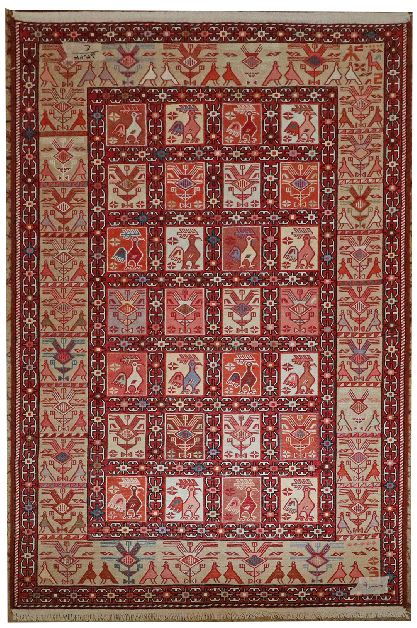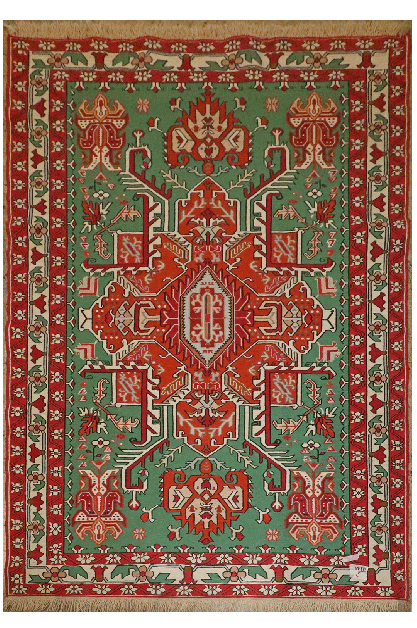Varni Kilim: A Persian Handmade Treasure
Los Angeles Home of Rugs on May 1st 2024
Varni, also known as "Gelim Sozani," is a type of Sumak weaving crafted by the skilled hands of women and girls from the nomadic tribes of Arasbaran. Rich in cultural heritage, these kilims bear witness to centuries of tradition and artistry, woven into the very fabric of Persian culture.
Evidence of Varni weaving can be found in the historical stone tombs scattered across the Arasbaran region, such as those in the villages of Anjerd in Ahar County and Aas in Kalibar County. Carrying forward this legacy, the city of Ahar and its surrounding plains have become hubs for Varni production, earning Ahar the prestigious title of the national Varni city in Iran.
Distinct from traditional kilims, Varni is a flat-weave rug devoid of pile, characterized by its twill weave technique. Unlike kilims, where the design is created using discontinuous knots and wefts, Varni patterns are formed through additional weft wrapping, resulting in both warp and weft threads being covered. This distinctive weaving method gives rise to intricate motifs and designs that adorn the surface of the Varni kilim.
Commonly used for various purposes, Varni kilims serve as floor coverings, bedspreads, or decorative rugs, often woven in standard sizes of 1.3 × 1 meters or 1.5 × 1 meters. The overall design of Varni comprises three main elements: the border, field, and "göl" (meaning basin or pond), with the hallmark decorative element being the S-shaped motif, reminiscent of a dragon in the culture of nomadic tribes.
Varni weavers draw inspiration from nature and local fauna, incorporating motifs of deer, gazelles, wolves, sheepdogs, ostriches, birds, and other indigenous animals into their geometric designs. The primary production center for Varni is the Shamakhi region, particularly the city of Shamaakhi, where cultural exchanges, tribal connections, and trade routes along the Aras River have fostered the spread of Varni weaving among the Arasbaran tribes and beyond.
Today, over 20,000 individuals in the Ahar region, particularly in the city of Ahar, derive their livelihoods from Varni production, ensuring the continuation of this ancient craft and the preservation of Persian cultural heritage for generations to come.
|  |  |













